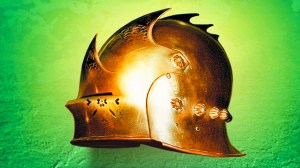
Rob Liefeld gets a bad rap, but that’s finally changing. The release of three new issues of Bloodstrike from modern cartoonist and revenge comics connoisseur Michel Fiffe, “missing stories” of Liefeld’s original team of enhanced, black ops operatives, is a clear reminder of the potential found throughout the Extreme line of comics. It is also just the most recent installment in a growing collection of reimagined Liefeld concepts. The work found on revivals of Prophet and Glory have delivered some of the Image Comics’ greatest modern successes in a line filled with immense talents. Each of these characters found their roots in Liefeld’s style and approach to storytelling, but have gone on to become flexible icons showcasing a much more diverse array of artists. There is still plenty of untapped potential within Liefeld’s Image Comics catalog though, and the most notable title yet to be revitalized is obvious: Supreme.
Videos by ComicBook.com
Just like the characters Prophet and Glory, Supreme was introduced in the pages of Youngblood, Liefeld’s flagship title upon Image Comics’ premiere in 1992. He did not appear until Youngblood #3, and was clearly destined to be more than a supporting character. More than 60 issues have featured the character’s name on their cover, ranging from the original series to miniseries by comics icons like Alan Moore, Warren Ellis, and Erik Larsen. He has a storied history, but it’s difficult to find much of that on comics shelves today. Reprints are missing, and the actual character was difficult to spot in his most recent miniseries. Supreme is a title in need of more than one form of revival today, both as one of Liefeld’s most enduring creations and the source of so many great comics works.

The Original Series
Supreme began existence filling the Superman role of Liefeld’s Extreme line. He was the ultimate power in the universe, a god-like being that often considered himself to be a god. There was no direct allegory though as morality and justice weren’t at the center of the character’s existence. He instead functioned as the more extreme continuation of a universe built upon power fantasies. That perspective on superhero comics also allowed Liefeld and other early creators to treat continuity as a secondary concern. He has been both an angel and a god with neither consistently weighing on the character’s actual presence outside of convenient storylines. If Superman were the ur-text of the superhero genre, then Supreme was the logical conclusion of one perspective that Liefeld and his peers explored in the late ’80s and early ’90s.
Many of these issues of Supreme and its related miniseries and tie-ins have remained out of print for an extended period of time though. There are few better examples of the raw power and inimitable style that made Liefeld a phenomenon, only missing the label “child prodigy” by a few years, at the start of his career. With so much interest and reevaluation now being applied to this era, clearer digital reproductions of Supreme would be invaluable in investigating the both the birth of Image Comics and Liefeld’s approach to the superhero genre. That’s not to mention the revival overseen by Erik Larsen which emphasized a similar approach to comics, while simultaneously purging some of the most interesting work ever done with the character.

Alan Moore’s Supreme
That work refers to the Supreme stories written by Alan Moore, of course. While Moore has become one of the most revered names in comics history by fans, historians, and critics, his work on Supreme is surprisingly difficult to find. No matter how he is treated by former publishers, the respect for his work itself is undeniable. He wrote approximately 22 issues which were broken into two collections, “The Story of The Year” and “The Return.” They have been compared to his work on other critically lauded titles like Miracleman and Swamp Thing, and for good reason. Moore and his collaborators took the obvious comparisons to Superman and explored the possibilities and constraints of great power. Many of the writer’s comics have remained in print for decades, yet his work on Supreme has been left fallow. For whatever personal or legal disagreements may have led to the loss of this work, it is long overdue for reprinting, if only for historical and academic purposes. As comics readers push for a more serious consideration of the medium in these circles, great works like Moore’s stint on Supreme need to be made available once more.
Moore’s run on Supreme is not the only significant reimagining to be completed after Liefeld ceased work on the character though. The series Supreme: Blue Rose is the last of the Extreme line reimaginings completed with Liefeld’s blessing in 2015. Written by Warren Ellis and drawn by Tula Lotay, the series questioned the very nature of reality while pushing the boundaries of comics layouts. It is an ambitious and beautiful comic that builds on the Supreme mythology without relying on the character’s appearance. This series, luckily enough, has remained available, if underappreciated.

A Canvas for Future Creators
Perhaps the greatest gift of Ellis and Lotay’s work is that it did not close the door for future reimaginings of the character. It was so far beyond past stories and the character himself as to exist outside any semblance of continuity in Liefeld, Moore, Larse, or others’ work. While Moore’s story has been wiped away and Larsen offered an ending of sorts, there is no reason that more could not be done on a new Supreme title tomorrow.
The current Bloodstrike reimagining by Michel Fiffe is only planned to run for one more issue, and every creator to touch upon Liefeld’s rich universe of Image Comics-based characters has struck imaginative oil. A character like Supreme offers a perfect opportunity for other rising cartoonists and creators to make a bold statement with the backing of an established publisher. Everything about Supreme’s history, both in his story and publication, is strange, but that strangeness has only led to great things. It’s time to continue that streak and tell more great Supreme stories.








